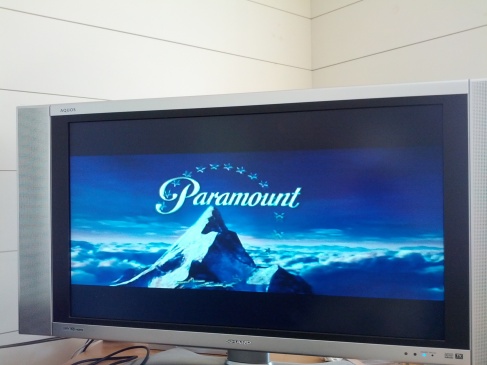Update: For specific implementation details including recommended hardware and costs, see the follow up post here.
Neither my wife nor myself had cable when we met, and even as a couple we never bothered to subscribe. It’s not really a question of content, exactly: there are several shows she watches regularly, and I’d love to have Red Sox games in the house. It’s more the cost: we don’t really see the point of paying almost a hundred dollars a month for hundreds of channels we’ll never watch. We’re not alone, obviously: more and more people are cutting the cord every year. The downstream impact of this attrition will be interesting – and in the case of efforts to kill net neutrality, horrifying – to watch, because the carriers for us are what they refuse to be: a dumb pipe.
Up until this week, however, our multimedia experience was terrible, especially for a household with one member whose employment description includes “technology analyst.” Aside from watching Amazon or Netflix videos on our laptops, we had an old Mac Mini connected to my old Sharp Acquos 37″ TV. If we wanted to watch something together, then, we manually queued it up on the Mini via a browser, manually expanded the Flash or Silverlight player to full screen and then prayed we wouldn’t need to pause it for any reason. Because that meant getting up and using the mouse or keyboard to pause the video. Seriously. In 2012, we had no effective remote control.
Ridiculous, I know. But I fixed all of that this week. Here’s how.
Roku
The first decision to make was Apple TV or Roku (Boxee got no votes from my audience). Either would at a minimum return us to a world containing remote controls, but I had to determine which to get. In spite of the two Mac laptops, the Mac Mini and my wife’s iPhone, we don’t really consider ourselves an Apple household. But more importantly, the Apple TV wouldn’t connect to either Amazon Instant videos or HuluPlus, both of which we subscribe to. Which made the decision easy.
We bought a Roku XD – which will do 1080P HD, but not play games – at Amazon for about two dollars off the devices suggested $79 retail price. Setup was simple enough that I’m pretty sure that my parents could complete it without assistance. A little bigger than a hockey puck, the Roku was unobtrusive and offered us – finally – the ability to watch content from Amazon, Hulu, Netflix and so on without messing around with a keyboard and mouse. For the baseball fans in the audience, it supports MLB.tv, so you can watch any game except those that involve the home team (unless you get creative: think VPN). We’ve added other channels, like CNN and PBS, but for the most part we were watching our usual mix of Amazon, Hulu and Netflix.
By itself, the Roku was a massive improvement over our previous setup. But the inability to integrate music, movies and TV that we had on hand was unfortunate. Then I discovered that Plex had an official Roku channel.
Plex
For those unfamiliar with it, Plex is free to download software that serves as both media server and front end. At one point, I tried to go Plex only, approximating the Roku’s functionality, but using it with the Mac Mini’s little two button remote was tedious. Instead, we now leverage as a back end, just another content provider for our Roku front end.
First, I downloaded the Plex Media Server package, set it up on the Mini, pointing it at the local Dropbox maintained music repository and the Google Drive synced video directories. Then I added the Plex channel to the Roku, and had it discover the Plex Media Server running on the Mac Mini. In addition to serving it up, Plex reaches out and pulls down images, descriptions and category information for everything from film to TV. Five minutes later, I was watching a movie off the Mac Mini via the Roku. The net, then, is that the Roku can pull in all of the major content provider channels – as well as anything I happen to have on hand locally.
As an added bonus, Plex has an Android app ($4.99) that will let my Galaxy Nexus stream anything from my Plex Media Server. Like movies, for example:

In theory, I could access the content remotely as well, though our current network configuration isn’t really set up for that now. Crazy, no?
Issues
- One technical limitation I’ve discovered thus far is that the Roku only speaks a couple of video formats natively, so there were some buffering-like pauses as Plex transcoded the video on the fly, but Handbrake should be able to convert the videos I have on hand (it’s actually what Roku recommends) to something Roku’s more comfortable with. If you have a lot of video, however, this may be less ideal.
- The biggest problem with cutting the cord today is live sports. Think carefully about how much sports you watch, because that might decide you against going without cable. A few leagues like MLB are streaming their games today, but most are not. And even in cases where they are, like MLB, the blackout restrictions – intended to prevent people from doing what we do – are likely to be a problem. I’m fine with it because I have no problem listening to baseball on the radio, but your mileage may vary.
- The Mac Mini’s wireless card is b/g, so wireless bandwidth does not appear right now to be a limiting factor. But depending on how much video we’re pushing around to different devices, we may have to upgrade our local network of WR54TG dd-wrt formatted access points and repeaters to 802.11n infrastructure, and get a new wireless card for the mini.
- If we’re really going to do the local media thing correctly, we’ll probably need to get a few new terabyte or two terabyte hard drives (suggestions welcome) at some point for storage and backup. The media right now resides on a single Maxtor 250GB external drive, which I don’t trust.
The Net
In less than a week, our media setup went from circa 1975 to 2015-ish, I think. The Roku’s a more than capable media front end, and the Mac Mini – which otherwise is a terrible, slow machine – gets a new lease on life with its new role as a home media file server. We can now browse virtually every popular internet content source (with the exception of YouTube, which can be played via Plex) and virtually any local media quickly and efficiently via a remote, with playback very straightforward. Or as straightforward as streaming services get.
All of that, for $78 (Amazon shipped it for free), or what one month of cable with a premium channel might cost you. Sure, HuluPlus+, Netflix and so on aren’t free, but even combined they’re a hell of a lot cheaper than your average cable bill. The Roku/Plex experience is, frankly, what I expected Google TV to be, but with Logitech losing a $100 million on that business, its future is uncertain. In the meantime, however, the combination of Roku and Plex is both compelling and cheap. If you’re an Apple fan and don’t use Amazon or Hulu, the Apple TV is a good option, but for everyone else the Roku’s worth a shot.
